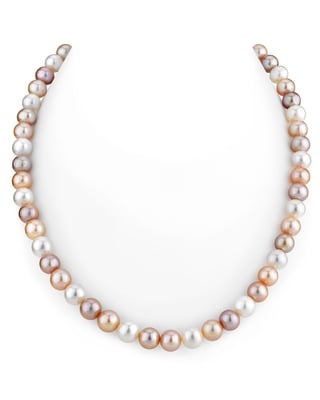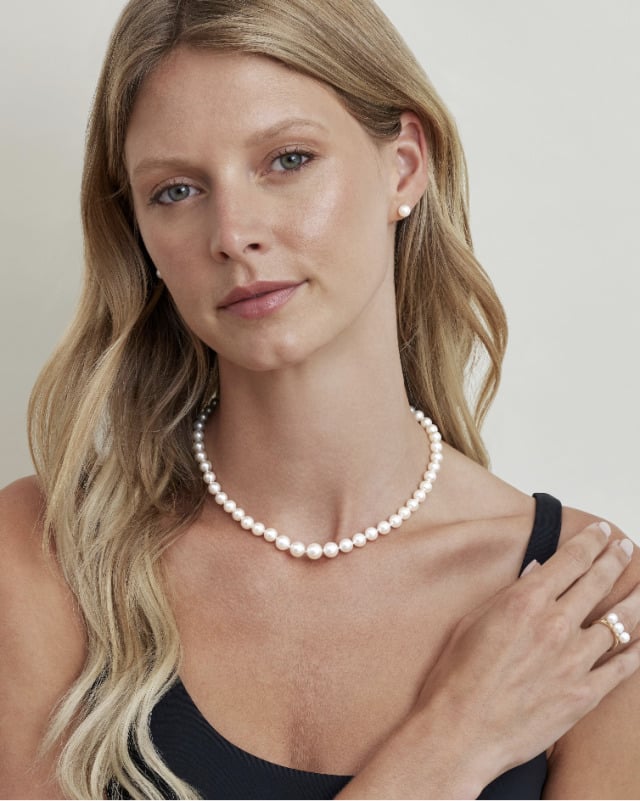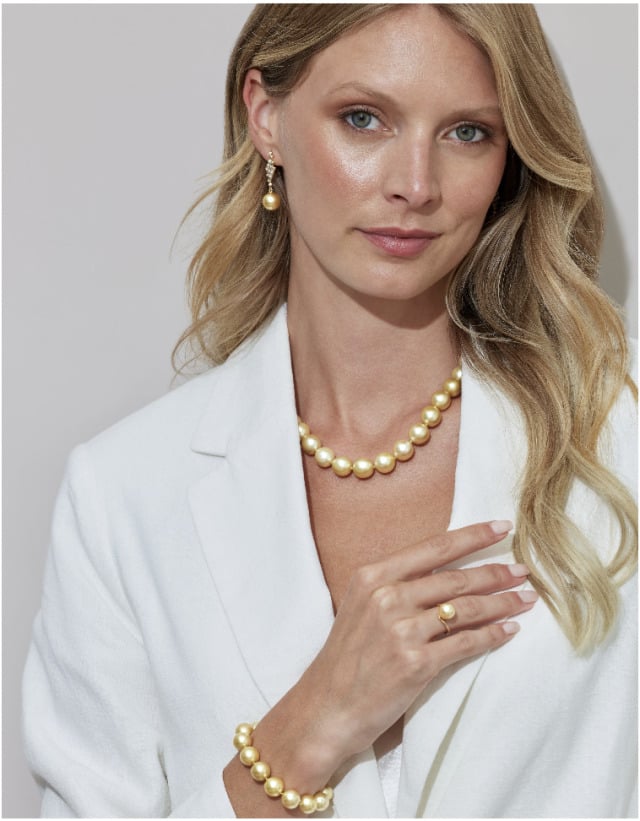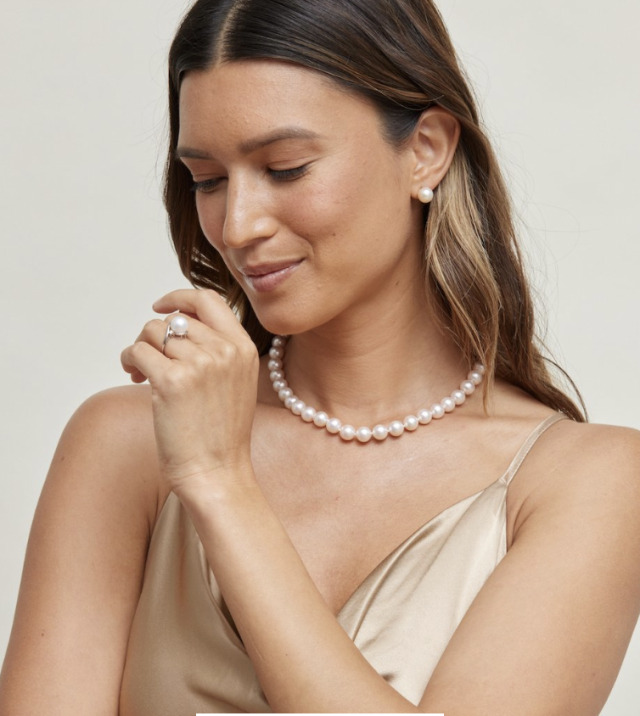Where Do Pearls Come From?
Pearls have captivated civilizations for centuries. Prized for their glowing luster and organic beauty, they’re unlike any other gemstone in the world. But while diamonds are mined and rubies are cut, pearls are created by living creatures—formed deep inside mollusks as part of a natural defense mechanism.
Pearls are often considered jewels, as they are valued not only for their rarity but also for their inherent natural beauty as precious ornaments.
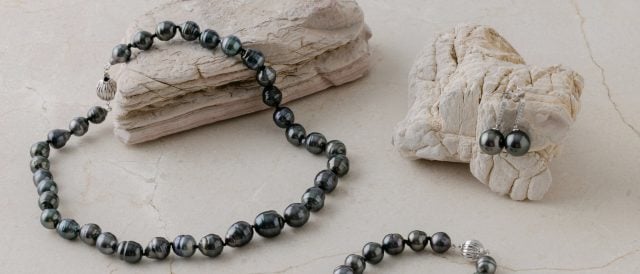
So, where do pearls come from, really? In this guide, we’ll explore their biological formation, natural and farmed origins, regional varieties, and how each pearl’s journey—from ocean depths to fine jewelry—reveals something rare and remarkable.
What Is a Pearl?
A pearl is a one-of-a-kind organic gemstone, created by living animals in response to an environmental stressor. Most pearls form inside oysters and mussels—both part of the mollusk family—when an irritant enters the soft tissue inside their shell. The process is the oyster’s natural reaction to an irritant: in defense, the mollusk begins to coat the irritant with nacre, a crystalline substance made of calcium carbonate and conchiolin.
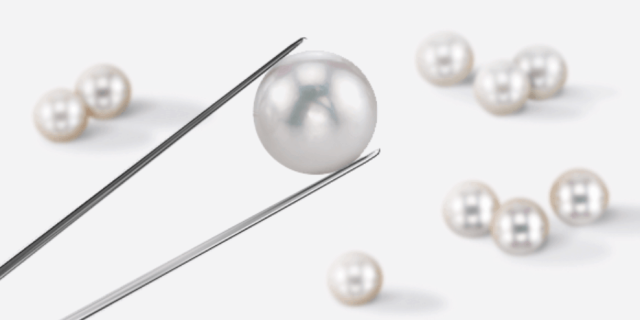
Nacre, also known as mother-of-pearl, is responsible for the pearl’s shimmering luster and smooth finish. Nacre also contains aragonite, a crystalline form of calcium carbonate, which contributes to the pearl’s iridescence. Minerals such as calcium carbonate and aragonite are fundamental to the formation of both shells and pearls. As the mollusk deposits layer upon layer of nacre in concentric layers around the irritant, a pearl slowly forms. The process is entirely natural and can take several months to several years depending on the species and environment.
What sets pearls apart from all other gemstones is that they are not cut, polished, or shaped by human hands. They emerge from their host already lustrous and, in some cases, perfectly round. Pearls are the only gem material made by a living creature and valued for their unaltered natural form.
A Brief History of Pearl Discovery
Throughout history, pearls have held a unique place of cultural, spiritual, and economic significance. Ancient civilizations in Mesopotamia, Egypt, Greece, and Rome treasured pearls as symbols of status and divine favor.
In the Middle Ages and Renaissance, pearls were worn by royalty and aristocrats, often featured in elaborate crowns, collars, and tapestries. Natural pearl diving was labor-intensive and dangerous, yet yielded some of the most prized gems in history.
The cultured pearl revolution in the early 20th century democratized access to pearls, transforming them from rare luxury to an essential part of fine jewelry collections worldwide.
 The Susa Pearls, dating back to approximately 420 BC, was found in 1901 in the sarcophagus of a Persian princess. It is now on display in the Louvre. Image: karipearls.com
The Susa Pearls, dating back to approximately 420 BC, was found in 1901 in the sarcophagus of a Persian princess. It is now on display in the Louvre. Image: karipearls.com
How Pearls Form: The Natural Process
The Role of the Mollusk
Pearl formation is a defense response. When a foreign substance enters a mollusk’s shell—such as a grain of sand, parasite, or shell fragment—the animal’s immune system recognizes the intrusion and activates the secretion of nacre. The early stage of pearl formation begins as soon as the irritant enters the mollusk. Most often, small irritants such as tiny parasites or shell fragments trigger this process. This nacre coats the irritant, layer by layer, gradually forming a pearl.
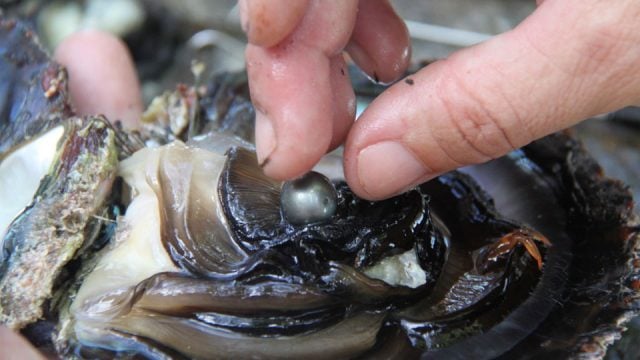
The specific anatomy of a mollusk is central to this process. Mollusks possess a mantle, which is a layer of tissue responsible for shell and nacre production. When the mantle detects the foreign body, it secretes nacre around it. This is not an aggressive response, but a protective one—a way for the animal to safeguard its soft inner tissues from harm.
Duration of Formation
The time it takes for a pearl to fully form varies widely:
- Freshwater pearls can develop in as little as 6 months but are usually grown for 1 to 2 years for higher quality.
- Saltwater pearls, such as Akoya, South Sea, or Tahitian, are generally cultured for 1.5 to 3 years.
Longer growth periods result in thicker nacre, thus increasing the durability, luster, and overall quality of the pearl.
Pearl Shapes and Formation Variables
Not all pearls are perfectly round. The shape of the resulting pearl depends on many variables, including the location of the irritant, the species of mollusk, and the environmental conditions. Common pearl shapes include:

- Round: the most traditional and valuable
- Near-round: slightly off-round but still symmetrical
- Baroque: irregularly shaped pearls, known as baroque pearls, are prized for their uniqueness and individuality in jewelry
- Drop or teardrop: ideal for pendants and earrings
Each pearl is unique, and the process that creates it is a delicate balance between biology, time, and environment.
Natural Pearls vs. Cultured Pearls
What Makes a Pearl “Natural”
Natural pearls form entirely without human intervention. Historically, they were found by pearl divers combing the ocean floor or riverbeds, particularly in the Persian Gulf, Red Sea, and Gulf of Mannar. These pearls were once the most prized gemstones in the world, worn by royalty and passed down as treasured heirlooms.
But natural pearls are exceptionally rare. It’s estimated that only one in tens of thousands of wild oysters will produce a natural pearl, and even fewer will yield a pearl suitable for jewelry. Overharvesting and environmental changes have made natural pearls even scarcer, which is why most of what you see on the market today are cultured.
The Rise of Cultured Pearls
Cultured pearls are produced through the same biological process as natural pearls, but with a little help from human hands. In the early 1900s, Japanese entrepreneur Kokichi Mikimoto developed a method of pearl cultivation that involved implanting a small bead or piece of mantle tissue into the mollusk. Sometimes, mantle tissue from a closely related species is used to avoid rejection during transplantation.
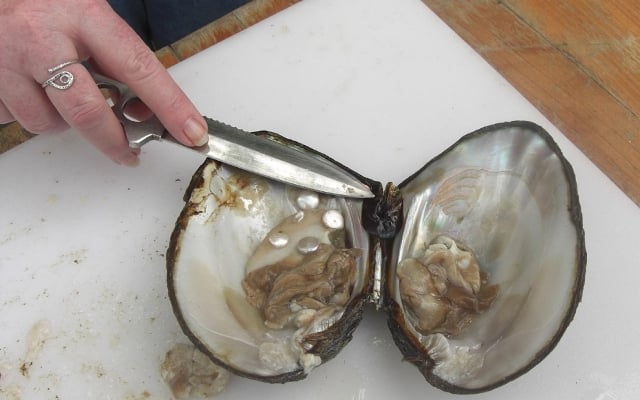 Cultured pearl grafting. Image Source: Krishi Jagran
Cultured pearl grafting. Image Source: Krishi Jagran
Once the nucleus is inserted—often a spherical bead—the mollusk begins secreting nacre, just as it would in the wild. These pearls are then grown under closely monitored conditions until they reach ideal size and luster. Cultured pearls revolutionized the jewelry industry by making pearls more accessible and consistent in quality.
Are Cultured Pearls Real Pearls?
Yes. Cultured pearls are just as real as natural pearls. The difference lies in how the irritant is introduced. Everything else—from nacre formation to growth time to final appearance—is governed by the same natural processes.
Today, nearly all pearl jewelry features cultured pearls due to their beauty, affordability, and responsible sourcing.
Where Are Pearls Found?
Pearl oysters and mussels produce pearls in both saltwater and freshwater environments. Mussels produce pearls primarily in freshwater habitats such as rivers and lakes, while pearl oysters are responsible for most saltwater pearls. The location of origin affects everything from size and shape to color and price. Farmed pearls, which are cultivated through aquaculture practices, are commonly obtained by carefully opening the oyster shell and inserting a nucleus to stimulate nacre development. The oyster’s shell has a layered structure, including the periosteum, prismatic layer, and nacre, which protects the animal and facilitates pearl formation.
Saltwater Pearls
Saltwater pearls are typically grown in oysters in the oceans and seas of the world. Major saltwater pearl-producing regions include:
- Japan and China (Akoya Pearls)
- French Polynesia (Tahitian Pearls)
- Australia, Indonesia, and the Philippines (South Sea Pearls)
Black pearls, known for their unique dark coloration, are primarily found in the South Pacific, especially in French Polynesia. These pearls are highly prized for their rarity and natural beauty, and can be either natural or cultured.
Saltwater pearls are available in various colors, including white, black, and gold. These pearls are generally rounder and have a higher luster due to the specific oyster species and farming techniques used. They are usually grown one pearl per oyster, which increases their rarity and value.
Freshwater Pearls
Freshwater pearls are cultivated in rivers, lakes, and ponds, primarily in China, which dominates global production. These pearls are grown in freshwater mussels, the primary mollusks used to cultivate freshwater pearls, and these mussels can produce multiple pearls at once.
Freshwater pearls are known for their wide range of natural pastel colors and baroque shapes. While they are typically more affordable, advances in farming have led to the creation of freshwater pearls with quality that rivals their saltwater counterparts.
Environmental Factors
Water temperature, salinity, pollution levels, and farming practices all influence the final appearance of a pearl. Cooler waters often produce pearls with tighter, finer nacre layers, resulting in more intense luster, while warmer climates contribute to faster growth and larger pearls.
The natural history of mollusks shapes their ability to adapt to changing environmental conditions, which in turn affects pearl formation.
Major Pearl Types and Their Origins
Each pearl variety has its own distinct characteristics, largely influenced by its region and host mollusk.
Akoya Pearls (Japan, China)
Coming from Akoya oysters, these pearls are the epitome of classic elegance. They are known for their high luster, round shape, and white to cream coloring with overtones of rose or silver. These pearls are typically small to medium-sized, ranging from 6 to 9 mm, and are widely used in traditional pearl necklaces and bridal jewelry.
Tahitian Pearls (French Polynesia)
Tahitian pearls are naturally dark pearls cultivated in black-lipped oysters. They range in color from charcoal gray and green to peacock, blue, and aubergine. Sizes span 8 to 14 mm or more, and their bold hues make them ideal for statement jewelry.
PEARL SPOTLIGHT
Mysterious, luminous, and undeniably bold, black pearls are anything but traditional. Cultured in the warm lagoons of French Polynesia, these Tahitian gems shimmer with unique overtones of peacock green, deep aubergine, and silver-blue.
Whether set in a sleek necklace or statement earrings, black pearls bring an elegant edge to any look. Discover the beauty of pearls with a little attitude.
South Sea Pearls (Australia, Indonesia, Philippines)
Among the largest and most valuable pearls in the world, South Sea pearls come in white, silver, and golden tones. Grown in the warm waters of the South Pacific, these pearls are renowned for their thick nacre and radiant, satiny luster. Sizes range from 10 to 16 mm or more.
Notably, the largest natural pearl ever discovered was formed by a giant clam, underscoring the giant clam’s significance in the world of gemstones.
Freshwater Pearls (China)
Freshwater pearls offer incredible diversity in shape, size, and color. They are often found in pastel shades like pink, lavender, and peach, in addition to traditional white. Recent innovations have led to rounder, more lustrous freshwater pearls suitable for high-end jewelry.
How Pearl Farms Operate
Modern pearl farming is both an art and a science. The process begins with healthy mollusks, which are selected for their genetic potential and placed in optimal growing conditions.
In contrast, imitation pearls are mass produced in factories and do not share the same natural formation process as farmed pearls.
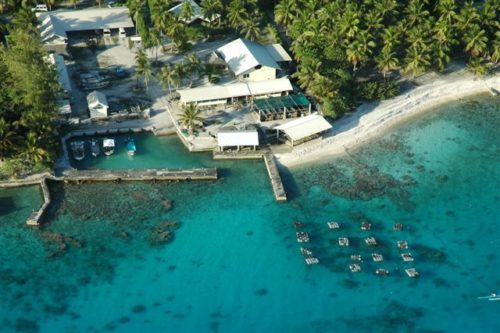 Find out where pearls come from by visiting a Tahitian pearl farm for yourself.
Find out where pearls come from by visiting a Tahitian pearl farm for yourself.
The Farming Process
- Seeding/Nucleation: Technicians surgically implant a nucleus into the mollusk.
- Recovery and Growth: Mollusks are returned to the water and nurtured over months or years.
- Monitoring: Farmers routinely check water quality, remove parasites, and monitor mollusk health.
- Harvesting: Pearls are carefully extracted, cleaned, and graded by experts.
Each farm’s methodology can affect nacre thickness, color development, and even shape, which is why top pearl farms invest heavily in research and sustainability practices.
The Pearl Industry: From Ocean to Market
The pearl industry bridges the natural world and the world of luxury, centered around the remarkable mollusks—oysters and mussels—that produce pearls in both freshwater and saltwater environments. Today, nearly all pearls on the market are cultured, grown through carefully managed pearl farming techniques that guide mollusks to form high-quality gems.
Pearl farmers play a hands-on role in this process, monitoring water conditions and caring for the mollusks until the pearls are ready to harvest. Once matured, the pearls are removed, cleaned, and graded by size, shape, luster, and surface quality before being crafted into fine jewelry.
The industry supports millions of jobs worldwide and is shaped by evolving technology, sustainability standards, and shifting consumer demand. From quiet coastal farms to high-end jewelry stores, the journey of each pearl reflects a global network of craftsmanship, innovation, and care.
Are Pearls Ethical and Sustainable?
- Low-impact production: Mollusks require clean, nutrient-rich water to thrive, encouraging farmers to maintain pristine marine environments.
- Natural filtration: Oysters and mussels filter water as they feed, improving ocean health.
- No mining or deforestation: Unlike diamonds or gold, pearl farming doesn’t disturb the earth.
- Support for local communities: Pearl farms often provide economic opportunities in coastal regions with few other industries.
When sourced from reputable farms, cultured pearls represent a model of ethical luxury.
FAQs
Where do pearls come from?
Pearls form inside oysters or mussels when an irritant is coated in layers of nacre. This natural process occurs in both saltwater and freshwater environments.
Do pearls come from saltwater or freshwater?
Both. Saltwater pearls come from oysters in oceans and seas, while freshwater pearls are formed in mussels in rivers and lakes.
What is a cultured pearl?
A cultured pearl forms when a pearl farmer inserts a small nucleus into a mollusk to trigger nacre production. It’s a real pearl formed through natural biological processes.
Do all oysters produce pearls?
No. Only certain species of oysters and mussels can produce pearls, and even then, only a small number will form gem-quality pearls.
Why are pearls organic gems?
Pearls are called organic gems because they’re made by living creatures, unlike mined gemstones which are formed in the earth.
Final Thoughts: The Journey of a Pearl
From the still waters of freshwater lakes to the sunlit reefs of the South Pacific, pearls are born of time, nature, and care. They are the only gem created through a living process—one that requires harmony between mollusk and environment.
Whether classic white Akoyas, mysterious Tahitians, radiant South Sea gems, or colorful freshwater pearls, each pearl carries a unique story of its origin. By choosing pearls from ethical, well-managed sources, you become part of that story.
At The Pearl Source, we are proud to offer fine cultured pearls from the world’s most respected farms. Our collections are curated with integrity, so every pearl you wear reflects the elegance of its journey.
